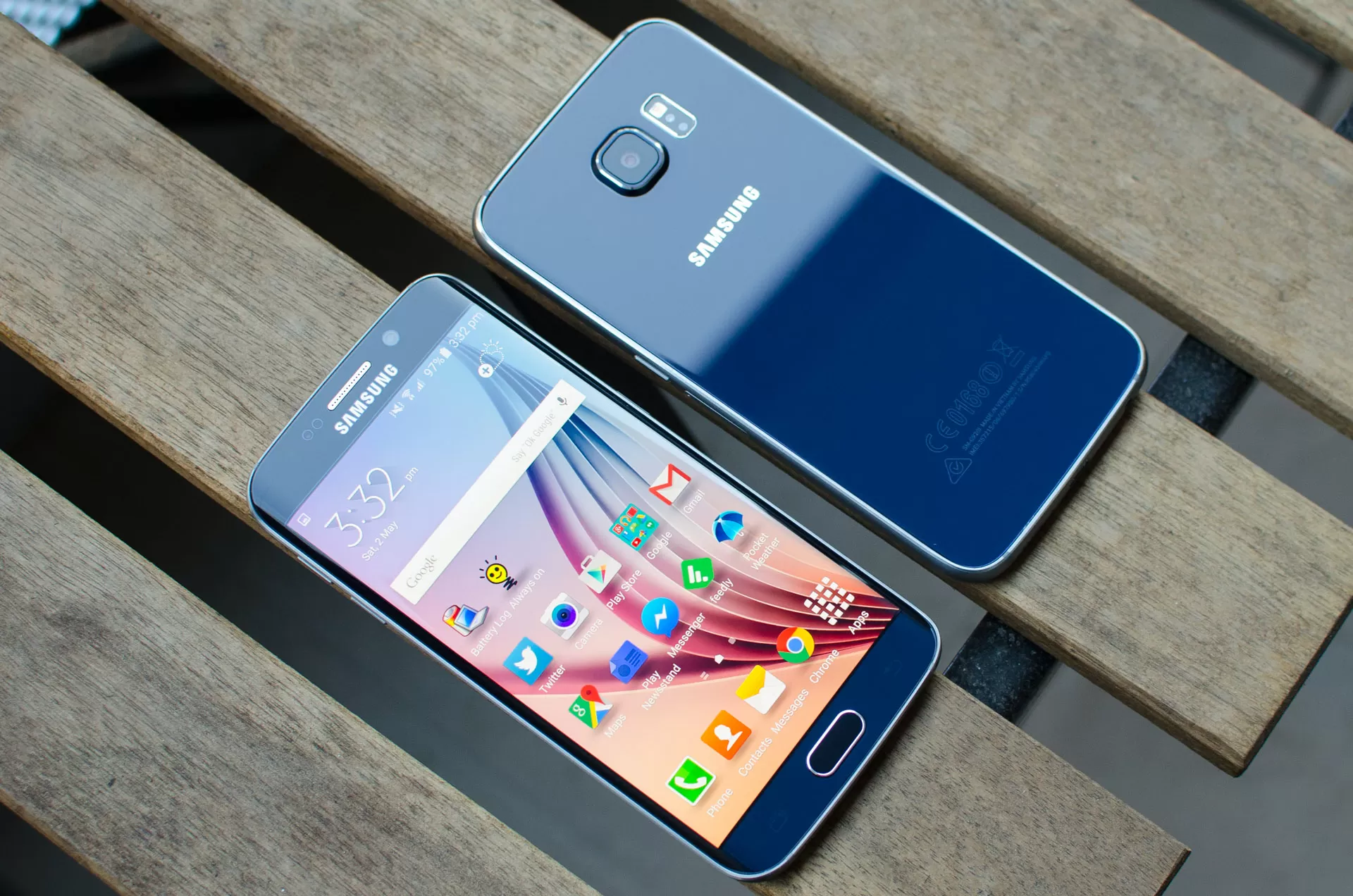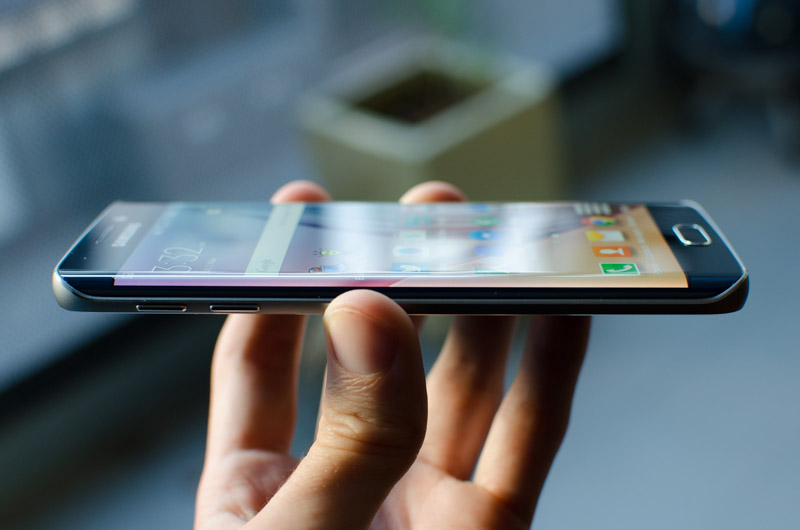Display: Curved or Flat?
Samsung has pulled out all the stops for the display on the Galaxy S6 and S6 Edge. The company has opted for a 5.1-inch Super AMOLED display on both devices, packing a resolution of 2560 x 1440 for a pixel density of 577 PPI. The S6 Edge features a gentle curve along the long edges of the display, while the standard S6 display is completely flat.
While I still don't believe 1440p provides a significant upgrade in display quality over 1080p, there's no denying the high resolution panel used for the Galaxy S6 looks sharp and generally excellent. Samsung obviously isn't concerned about issues with performance or display power consumption, and brightness is just as good as the Galaxy S5 with auto-brightness (and therefore the brightness booster) enabled.
In fact out of all of the 1440p displays I've used so far, the Galaxy S6 display has been the easiest to view outdoors, thanks to excellent peak brightness and low reflectivity. The S6 doesn't have viewing angles that are as good as other AMOLEDs I've seen, but the same can't be said for the S6 Edge and its magnificent viewability even at the acutest of angles.
Surprisingly, the quality of the Galaxy S6 and S6 Edge panels isn't identical. While both have fantastic displays that are easily in the top five smartphone panels on the market, the S6 Edge just beats the S6 in color tone (the S6 is slightly bluer) and accuracy (the S6 is slightly too vibrant). The differences are noticeable side-by-side, but it would be very hard to tell the difference between the two without this sort of comparison.
Either way, the Galaxy S6/Edge display is fantastic. Colors are vibrant and have that 'wow-factor' you only get with the best smartphone screens. But at the same time, saturation isn't so ridiculous that it throws off the accuracy of the display. Black levels are fantastic, as with all AMOLED displays, and color tone is surprisingly good, especially for the S6 Edge. Contrast is basically as good as it gets with the Galaxy S6 display.
When Samsung's brightness booster is activated when the phone is exposed to strong light (such as from the sun), the color quality of the panel does degrade noticeably. However it's not as bad as previous iterations of the brightness booster, and the display remains very readable even when outdoors. Unfortunately this feature is restricted to auto-brightness, so if you're a manual brightness person, you won't achieve peak brightness anywhere near as high.
Like Samsung's previous flagship smartphones, the Galaxy S6 and S6 Edge come with four different display modes, changeable in the settings menu, that control how the display produces colors. I typically left the displays on the default "adaptive display" mode as I felt it delivered the best results, but you can make the display more vibrant through the AMOLED cinema mode, more accurate through AMOLED photo, and more dull through the Basic mode.
While the option to change the sensitivity of the touchscreen has been removed in the Galaxy S6, the touchscreen remains sensitive enough in the default (and now unchangeable) state to allow use with gloves on. As you'd expect from a flagship smartphone, the 10-point multi-touch digitizer is extremely responsive and very accurate.
Also, after using the S6 Edge as my daily driver, I'm still convinced that having a curved display is not superior to a flat display for general use. With the edges of the S6 Edge's display curving away along either side, this introduces distortion into apps and images that typically fill the entire display area. Although you do get used to this distortion after a period of use, content just doesn't look as good, or as natural, on a display curved in this fashion.
Of course there are a few special things that the curved display facilitates, which I'll discuss a bit later on, but I'm not sure it's worth the distortion during regular, everyday smartphone use. However the Edge does have one, clear benefit: the touchscreen is a lot more swooshable.




